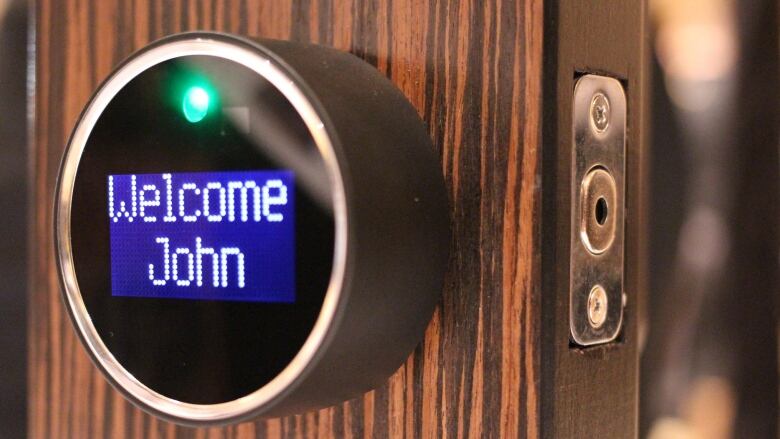Smart home devices used in cyberattack on tech writer's site
As home devices become more connected, experts warn the 'internet of things' could become a cyberweapon

From smart thermostats to smart door locks, the so-called "internet of things" the increasing range of internet-connected devices in our homespromises convenience.But security researchers warn that "smart" devices could also be used as cyberweapons.
That was illustrated recently when anarmy of hacked consumer electronics was used in a high-profile cyberattack. CBC Radio technology columnist Dan Misener explains why it's worrying in the age of the internet of things.
What was the latest cyberattack?

Basically, hackers tried to overwhelm his website with a huge amount of traffic,to the point that it would be taken offline.They succeeded, and his website was down for much of last week.
Denial-of-service attacks are quite common they happen every day.
- Cyberattacks target government of Alberta websites
- CSIS website falls victim to yet another cyberattack
- Github coding site hit by cyberattack
But the attack on Krebs has drawn attention because it seems to have been carried out, in part, by a botnet a group of internet-connected devices taken over without their owners' knowledge, and used in an attack. In this case, the botnet wasmade up of hacked internet of thingsdevices thesame kinds of devices that many Canadians already have in their homes.
A lot has already been said about thethe hackability of smart homedevices.
- q: Is it kind of dumb to make everything smart?
- Connected toys especially vulnerable to hackers, security experts warn
- Connected devices quietly mine our data, privacy experts say
But now,it seems that armies of hacked devices are being used as cyberweapons.
What kinds of devices were used in the attack?
Krebs wrote that his site was attacked by a botnet made up of hacked routers, internet-connectedcameras, and DVRs digital video recorders with internet access.
What's worrisome here is how many devices could potentially be used in an attack like this.Over the past few years, we've seen a growing number of consumer electronics become internet-connected everything from thermostats to vacuum cleaners to fitness trackers.
And along with that comes the potential for someone to gain remote control and use that device for their own purposes like a denial-of-service attack.
How doI know if my devicehas been compromised?
Security researcher KenMunrospecializes in the internet of things. He knows this stuff first-hand, because he's discovered and demonstrated a number of security vulnerabilities, including the hackability of smart thermostats.
He said the scary part for most of us is that we might not even know our devices have been used in such a cyberattack.

"If your device has joined the botnet, you might notice your internet bandwidth decreasing. But you might not notice. If it's a well-designed botnet, it'll only be a few packets going out from lots and lots and lots of devices. So it's a bit like stealing one cent from every bank account. It's only a cent, but if you steal a cent from every bank account, you've made a lot of money."
What should I look for in a smarthome device?
Munro says if you're considering something like a smart thermostator an internet-connected baby monitor,go for a brand name you recognize and trust.
"That's not to say they're not vulnerable, but the manufacturers of big brand-name products tend to be more responsive to fixing bugs when they are found," he said.

"I've been in in this field 20 years, and I have a very dumb thermostat," he said.
"Take from that what you will."
Will wesee more cyberattacks usingthe internet of things?
Absolutely, for a few reasons.
First, the install base for internet of things devices is only getting larger, with so many new consumer electronics getting internet connections. As the install base grows, these devices become more and more attractive for things like botnets.
Second, the default security on these devices is, relatively speaking, quite low.
And finally, once security vulnerabilities are identified, manufacturers tend to be slow to fix them.These days, it's pretty simple to update your computer or smartphone to the latest, most secure operating system less so for smart home devices.
"We haven't seen the half of it yet," said Munro.
"This problem's going to get a lot worse before it gets better."












_(720p).jpg)


 OFFICIAL HD MUSIC VIDEO.jpg)
.jpg)



























































































